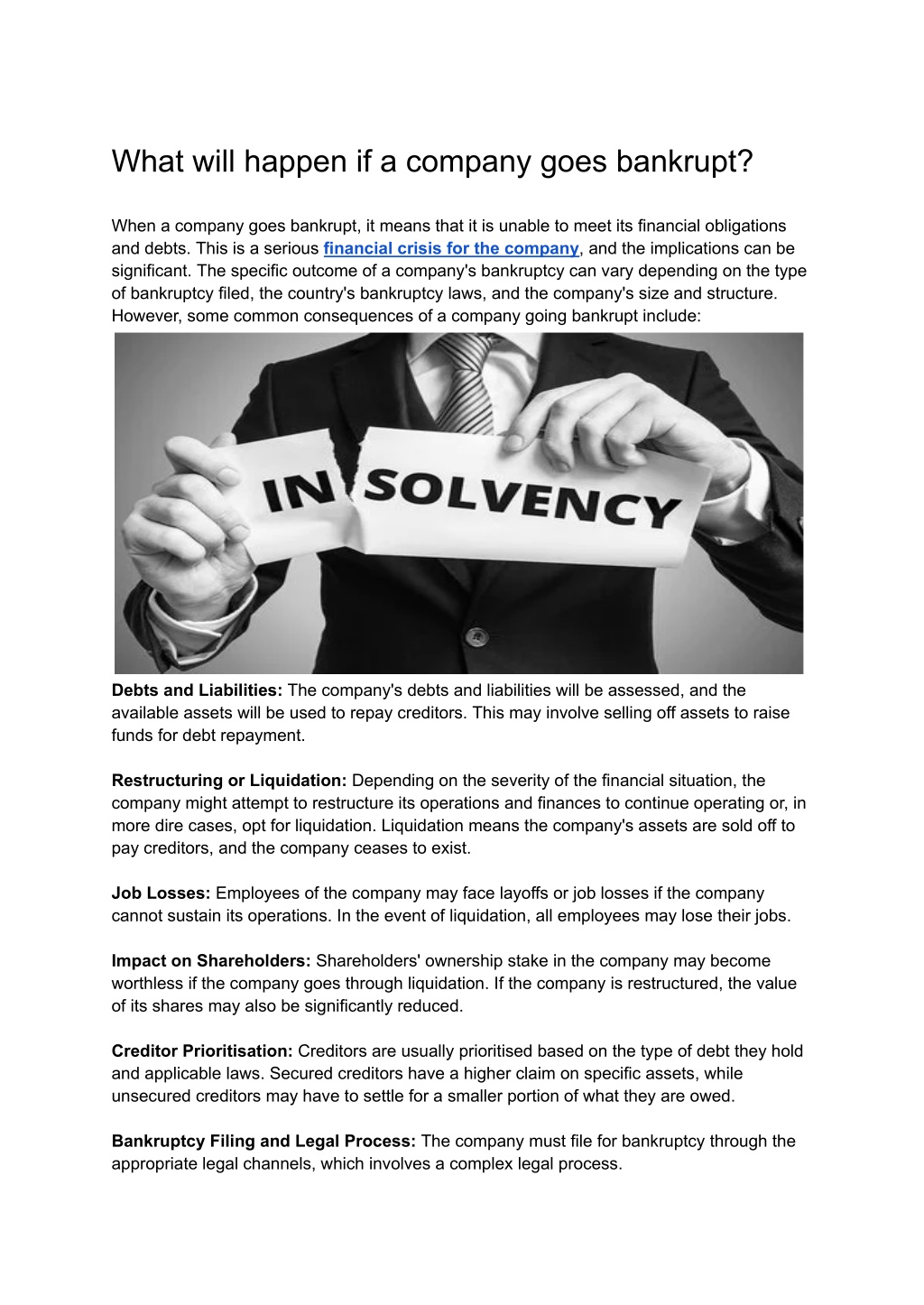Navigating Company Administration: Understanding the Process in the UK
Navigating Company Administration: Understanding the Process in the UK
Blog Article
The Process and Effects of a Firm Coming In Management
As a business deals with monetary distress, the decision to get in administration marks an important juncture that can have far-ranging ramifications for all involved celebrations. The process of going into management is intricate, including a collection of steps that aim to browse the firm towards potential recuperation or, sometimes, liquidation. Recognizing the functions and responsibilities of an administrator, the influence on different stakeholders, and the legal commitments that come right into play is necessary in comprehending the gravity of this scenario. The effects of such a relocation ripple past the business itself, shaping its future trajectory and affecting the wider business landscape.
Review of Business Management Process
In the world of company restructuring, a vital initial step is obtaining an extensive understanding of the detailed company management procedure. Company administration describes the formal insolvency treatment that intends to rescue an economically troubled company or accomplish a far better result for the business's financial institutions than would be possible in a liquidation circumstance. This process includes the consultation of an administrator, who takes control of the firm from its directors to examine the economic circumstance and figure out the most effective course of action.
Throughout administration, the business is provided protection from legal action by its financial institutions, giving a moratorium period to formulate a restructuring plan. The administrator deals with the business's administration, lenders, and various other stakeholders to design an approach that may involve selling business as a going issue, reaching a company voluntary arrangement (CVA) with creditors, or eventually putting the company into liquidation if rescue attempts show futile. The main goal of business administration is to take full advantage of the return to creditors while either returning the business to solvency or closing it down in an orderly way.

Duties and Duties of Administrator
Playing a pivotal duty in managing the business's financial events and decision-making processes, the manager assumes substantial obligations during the company restructuring process. The key task of the administrator is to act in the very best interests of the firm's lenders, intending to accomplish the most positive outcome feasible - into administration. This includes performing an extensive analysis of the company's economic situation, creating a restructuring plan, and executing approaches to optimize returns to creditors
In addition, the manager is in charge of communicating with numerous stakeholders, including workers, distributors, and regulatory bodies, to guarantee openness and conformity throughout the management process. They need to also interact efficiently with investors, providing routine updates on the firm's progression and seeking their input when required.
Additionally, the administrator plays an essential duty in handling the everyday operations of the company, making key choices to preserve continuity and maintain value. This consists of assessing the practicality of various restructuring choices, discussing with financial institutions, and ultimately assisting the firm in the direction of an effective leave from administration.
Impact on Business Stakeholders
Assuming an essential placement in looking after the firm's decision-making processes and economic events, the administrator's actions during the corporate restructuring process have a direct impact on different company stakeholders. Investors may experience a decrease in the worth of their investments as the firm's financial troubles are addressed. Creditors, consisting of vendors and lenders, might face unpredictabilities relating to the payment of debts owed to them. Staff members frequently run into job insecurities because of possible layoffs or modifications in job problems as part of the restructuring initiatives. Consumers might experience interruptions in services or item availability throughout the administration procedure, impacting their count on and loyalty towards the firm. In addition, the area where the business runs might be impacted by potential task losses or changes in the company's operations, influencing regional economic situations. Reliable interaction from the manager to stakeholders is crucial in managing expectations, alleviating problems, and fostering transparency throughout the management procedure.
Lawful Implications and Responsibilities
Throughout the process of company management, careful factor to consider of the lawful effects and commitments is paramount go to this web-site to guarantee compliance and protect the rate of interests of all stakeholders entailed. When a firm goes into administration, it triggers a set of legal needs that have to be adhered to.
Additionally, lawful implications arise concerning the treatment of workers. The manager must adhere to employment laws concerning redundancies, staff member legal rights, and commitments to give required information to worker representatives. Failure to conform with these lawful requirements can cause lawsuit versus the firm or its managers.
Furthermore, the firm going into administration may have contractual responsibilities with different parties, consisting of providers, landlords, and customers. These agreements require to be evaluated to identify the ideal strategy, whether to end, renegotiate, or accomplish them. Failure to manage these contractual obligations properly can cause disputes and potential legal repercussions. Basically, understanding and satisfying legal responsibilities are important facets of navigating a company via the administration procedure.
Techniques for Company Healing or Liquidation
In taking into consideration the future instructions of a business in administration, strategic preparation for either recovery or liquidation is vital to chart a feasible course ahead. When going for business healing, essential techniques may consist of carrying out an extensive analysis of the business procedures to recognize ineffectiveness, renegotiating leases or agreements to boost cash money circulation, and implementing cost-cutting actions to improve profitability. Furthermore, seeking new financial investment or funding alternatives, diversifying income streams, and concentrating on core competencies can all contribute to an effective recuperation strategy.

Verdict
In verdict, the process of a company getting in management involves the visit of an administrator, that takes on the obligations of managing the business's affairs. This process can have significant repercussions for numerous stakeholders, including creditors, investors, and employees. It is vital for companies to very carefully consider their options and approaches for either recuperating from financial troubles or proceeding with liquidation in order to alleviate possible legal implications and commitments.
Company administration refers to the official bankruptcy treatment that aims to save a monetarily distressed firm or achieve a better outcome find out here now for the firm's financial institutions than would be possible in a liquidation situation. The manager functions with the business's monitoring, pop over to these guys financial institutions, and other stakeholders to develop a technique that may include offering the service as a going problem, getting to a firm volunteer setup (CVA) with creditors, or inevitably positioning the business into liquidation if rescue attempts prove useless. The main objective of business administration is to maximize the return to creditors while either returning the company to solvency or closing it down in an organized fashion.
Presuming a crucial placement in managing the business's decision-making procedures and financial affairs, the manager's activities during the corporate restructuring process have a straight influence on different company stakeholders.In final thought, the process of a firm getting in management involves the appointment of a manager, who takes on the responsibilities of managing the firm's events.
Report this page